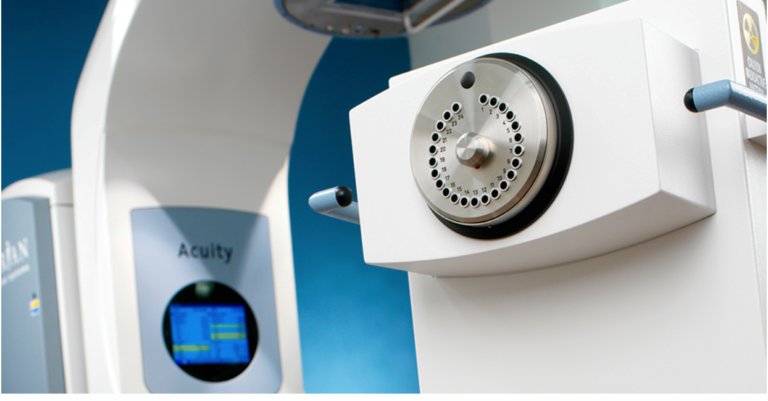Home / Healthcare & Medicine / Cancer / An Introduction to Radiation Oncology: From Diagnosis to Survivorship / Radiation treatment modalities
This article is from the free online
An Introduction to Radiation Oncology: From Diagnosis to Survivorship


Reach your personal and professional goals
Unlock access to hundreds of expert online courses and degrees from top universities and educators to gain accredited qualifications and professional CV-building certificates.
Join over 18 million learners to launch, switch or build upon your career, all at your own pace, across a wide range of topic areas.

 Linear accelerator
Linear accelerator

 Cyclotrons machine. Copyright: Dominika Zarzycka/Shutterstock
Cyclotrons machine. Copyright: Dominika Zarzycka/Shutterstock 3D Conformal Radiation Therapy (3DCRT) plan of a lung
3D Conformal Radiation Therapy (3DCRT) plan of a lung Volumetric modulated arc therapy (VMAT) plan of a prostate
Volumetric modulated arc therapy (VMAT) plan of a prostate  Stereotactic radiation therapy. Copyright: Elekta AB, Stockholm, Sweden
Stereotactic radiation therapy. Copyright: Elekta AB, Stockholm, Sweden Prostate seeds (Prostate brachytherapy). Copyright: Elekta AB, Stockholm, Sweden
Prostate seeds (Prostate brachytherapy). Copyright: Elekta AB, Stockholm, Sweden
 HDR Brachytherapy. Copyright: Varian Medical Systems, Inc.
HDR Brachytherapy. Copyright: Varian Medical Systems, Inc.





